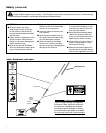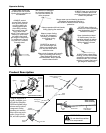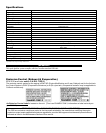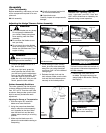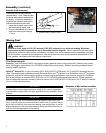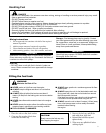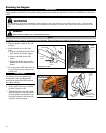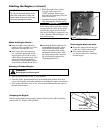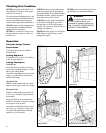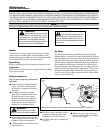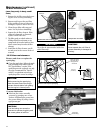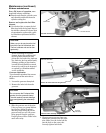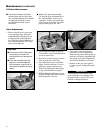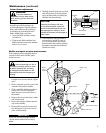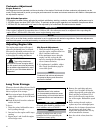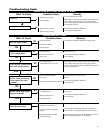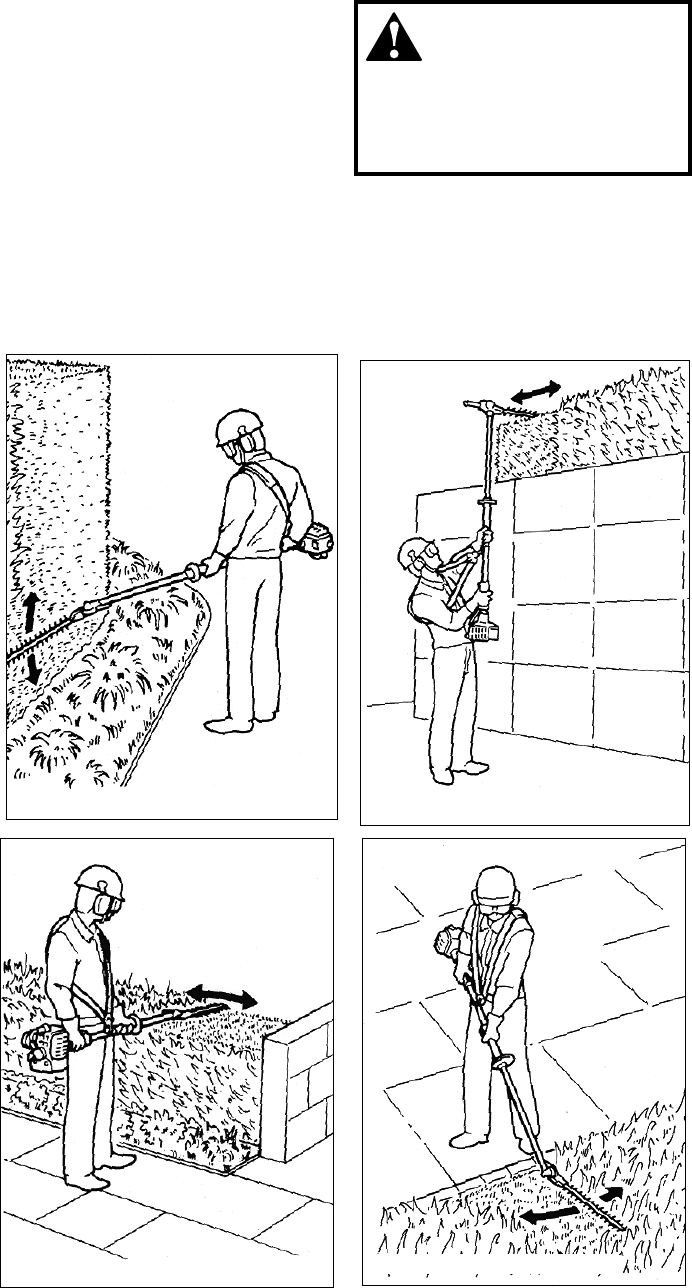
12
NEVER operate the unit with the cut-
ting attachment shield or other protec-
tive devices removed!
Use only authorized Shindaiwa parts and
accessories with your Shindaiwa trimmer.
Do not make modifications to this unit
without written approval from Shindaiwa.
ALWAYS make sure the cutting attach-
ment is properly installed and firmly
tightened before operation.
NEVER use a cracked or warped cut-
ting attachment: replace it with a ser-
viceable one.
Checking Unit Condition
ALWAYS make sure the cutting attach-
ment fits properly into the appropriate
attachment holder. If a properly installed
attachment vibrates, replace the attach-
ment with new one and re-check.
ALWAYS stop the engine immediately
and check for damage if you strike a
foreign object or if the unit becomes
tangled. Do not operate with broken or
damaged equipment.
NEVER allow the engine to run at high
RPM without a load. Doing so could
damage the engine.
NEVER operate a unit with worn or dam-
aged fasteners or attachment holders.
WARNING!
A cutting attachment shield
or other protective device is no
guarantee of protection against rico-
chet. YOU MUST ALWAYS GUARD
AGAINST FLYING DEBRIS!
Operation
Preparations
Use lopping shears to cut out thick
branches first.
Cutting Sequence
If a radial cut is necessary, cut a little at
a time in several passes.
Vertical Cut:
Swing the blade up and down in an arc
as you move along the hedge. Use both
sides of the cutting blade.
Cut without standing directly next to the
hedge, e.g. with a flower bed between
operator and hedge.
Overhead Cut:
Hold the shaft upright with a 90° blade
angle to cut an upper surface of a hedge.
Using the Hedge Trimmer
Cutting Techniques
Vertical Cut
Overhead Cut
Horizontal Cut
Horizontal Cut at ground level
Horizontal Cut:
Hold the cutting blade at an angle of 0°
to 10° as you swing the hedge trimmer
horizontally.
Swing the blade in an arc towards the
outside of the hedge so that the cuttings
are swept on to the ground.
Cut without standing directly in front of
the hedge, e.g. reach over a flower bed.
Cut close to the ground from a standing
position, e.g., for low shrubs.



